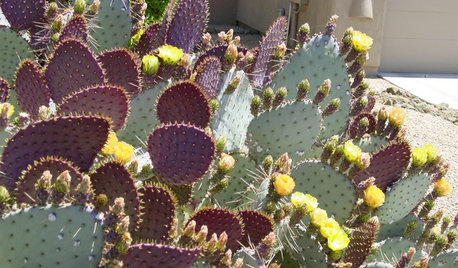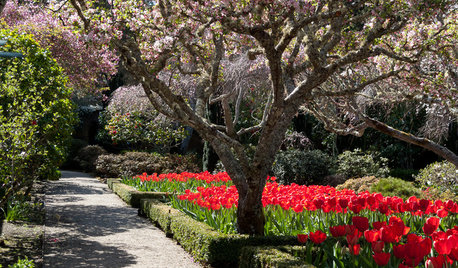Moving Daffs
westhighlandblue
18 years ago
Related Stories

FALL GARDENINGWhy Fall Is the Best Time for Planting
Spring is overrated for planting. Starting plants in autumn has advantages for both garden and gardener
Full Story
GARDENING GUIDES6 Unsung Bulbs for Fall Planting
Don't hang up your spade after summer — plant these unusual bulbs in fall for a spectacular spring show
Full Story
HOUZZ TOURSHouzz Tour: Modern Treetop Living in Sydney
Encouraging connections and calm, this Australian family home among the trees is all about subtlety
Full Story
GARDENING GUIDESAttract Hummingbirds and Bees With These Beautiful Summer Flowers
Roll out a welcome mat for pollinators to keep your landscape in balance and thriving
Full Story
GARDENING GUIDESGreat Design Plant: Santa Rita Prickly Pear for Purple Appeal
Distinctive colored pads and yellow flowers make this cactus a favorite in Southwestern gardens
Full Story
PLANTING IDEASEasygoing Tulip Ideas From a Grand California Garden
Gather up these ways to use tulips to make a spring garden of any size overflow with beauty
Full StorySponsored






zeffyrose
Pipersville_Carol
Related Professionals
Waunakee Landscape Architects & Landscape Designers · Barrington Landscape Contractors · Haverhill Landscape Contractors · Holland Landscape Contractors · New Berlin Landscape Contractors · Panama City Beach Landscape Contractors · Salem Landscape Contractors · Enterprise Carpenters · Murphy Carpenters · Levittown Carpenters · Cape Coral Decks, Patios & Outdoor Enclosures · Grafton Decks, Patios & Outdoor Enclosures · La Palma Decks, Patios & Outdoor Enclosures · Troy Decks, Patios & Outdoor Enclosures · Independence Siding & Exteriorsdaylilyaddict
westhighlandblueOriginal Author
Pipersville_Carol
zeffyrose
earthlydelights